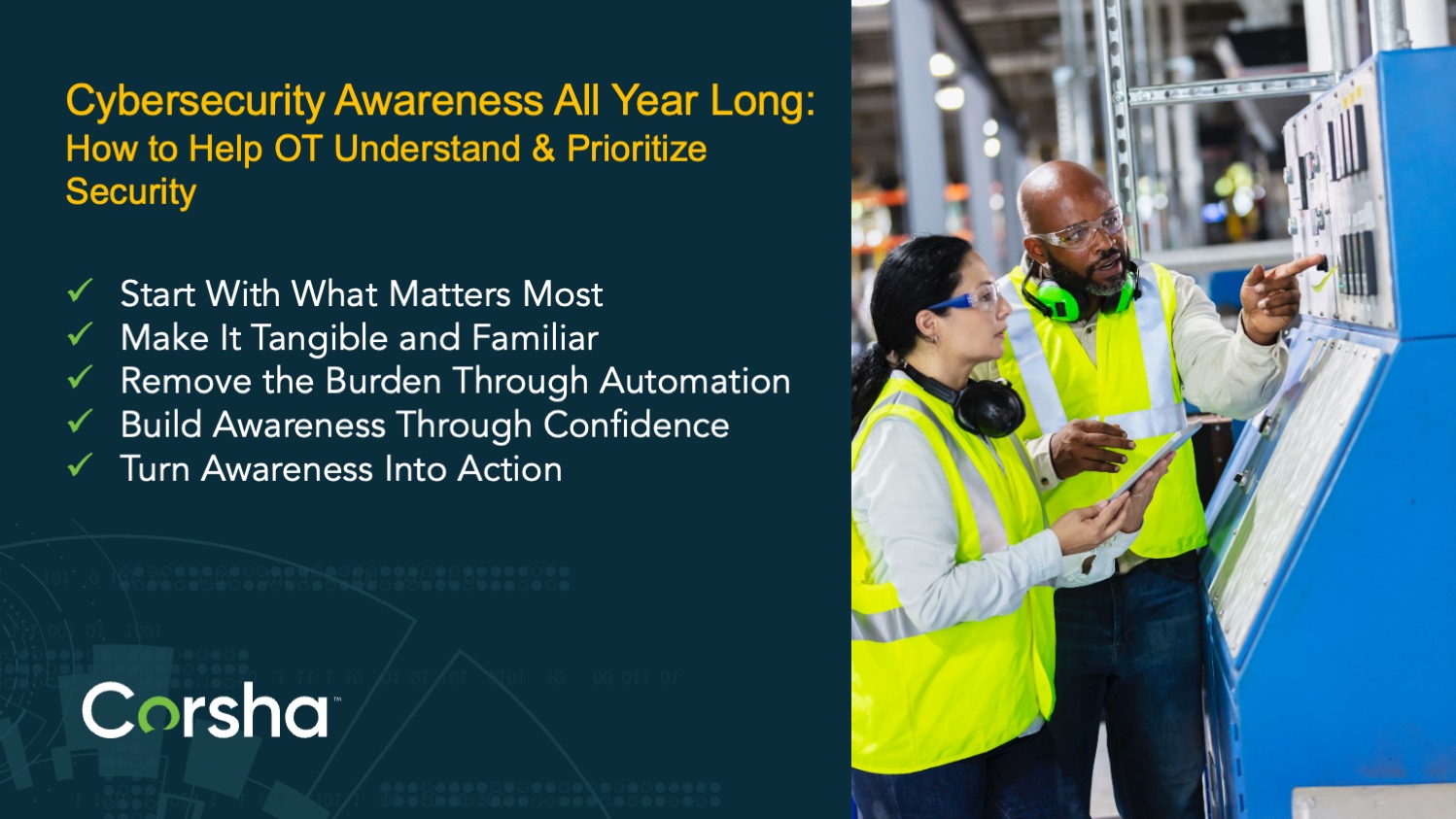In today's digital landscape, where technology permeates every aspect of our lives, it's essential to grasp the fundamental differences between Operational Technology (OT) and Information Technology (IT) infrastructure. While both are crucial components of modern organizations, they serve distinct purposes and have unique characteristics. In this blog post, we'll delve into the differences between OT and IT infrastructure to provide a clearer understanding of their roles and functionalities.
Operational Technology (OT) Infrastructure
Operational Technology (OT) refers to the hardware and software that are designed to monitor and control physical processes, devices, and infrastructure in industrial settings. OT infrastructure is prevalent in sectors such as manufacturing, energy, transportation, and utilities, where it plays a pivotal role in ensuring operational efficiency and safety.
The key considerations of OT infrastructure are:
-
Real-Time Operations: OT systems are primarily concerned with real-time control and monitoring of physical processes. They often operate in harsh environments and must deliver consistent performance to maintain operational continuity. Any disruption in communication between machines can have significant financial, logistics, or even safety impacts .
-
Legacy Systems: Many OT systems are built to operate for years or even decades. This creates an environment where many systems rely on legacy hardware and proprietary software that have been in use for an extended period of time. These systems are often purpose-built for specific industrial tasks and are not easily replaceable.
-
Safety Critical: Unlike IT systems, failures in OT infrastructure can have immediate and severe consequences, including safety hazards, production downtime, and environmental risks. As such, reliability and safety are paramount in OT design and operation. Each component must be evaluated for failover and repair options.
-
Isolated Networks: OT networks are typically isolated from external networks and the internet to minimize the risk of cyber threats. This isolation, however, can pose challenges in terms of connectivity and remote management.
When architecting an operational OT network it is paramount to plan for these infrastructure considerations to manufacture, generate energy, or supply utilities. This communication network is often referred to as the Purdue Model, which helps visualize the human and machine interaction throughout different steps of the network.
Information Technology (IT) Infrastructure
Information Technology (IT) encompasses the hardware, software, networks, and services used for storing, managing, processing, and transmitting data within an organization. IT infrastructure forms the backbone of modern business operations, supporting functions such as communication, data analysis, and decision-making.
The key considerations of IT infrastructure are:
-
Data-Centric Operations: IT systems are primarily focused on processing and managing data to support business processes and decision-making. They enable functions such as data storage, processing, analysis, and communication. Any data that is missing or modified can lead to inaccurate or misleading results.
-
Standardization and Interoperability: Unlike OT systems, which often rely on proprietary protocols and physical cables, IT infrastructure tends to be built on standardized protocols and platforms that facilitate interoperability and integration with third-party systems. Data must be in a format that can be exchanged and read by other tools, and systems must be updated with the latest patches and updates.
-
Cybersecurity Concerns: IT infrastructure is susceptible to a wide range of cyber threats, including malware, phishing, and data breaches. Consequently, robust cybersecurity measures, such as firewalls, encryption, identity and access management (IAM), network security, and intrusion detection systems, are essential to protect IT assets and data. The interconnected nature of IT infrastructure needs to be evaluated when analyzing potential attack vectors.
-
Cloud Adoption: With the rise of cloud computing, many organizations are migrating their IT infrastructure to cloud-based services for improved scalability, flexibility, and cost-effectiveness. In these hybrid architectures, at least some of the underlying IT infrastructure is managed by a third party.
IT infrastructure design often relies on connectivity and data movement with more frequent updates to modern components. Network security tends to be more of a software problem, and most services and applications can be programmed using the language of your choice rather than the manufacturer’s specific protocol.

Bridging the Gap: Convergence of OT and IT
While OT and IT infrastructure have traditionally operated in separate domains, there is an increasing trend towards convergence, driven by the adoption of technologies such as the Industrial Internet of Things (IIoT) and Industry 4.0 initiatives. This convergence seeks to leverage the benefits of IT, such as data analytics and connectivity, to enhance the efficiency and effectiveness of OT systems.
Some of the key trends driving convergence are:
-
IoT Integration: The integration of sensors, actuators, and other IoT devices into IT infrastructure enables real-time data collection and analysis, improving operational visibility and decision-making. The value of these IoT devices comes from collecting and analyzing the generated data.
-
Edge Computing: Edge computing technologies allow data processing to occur closer to the source of data generation, reducing latency and enabling faster response times in OT environments.
-
Cyber-Physical Systems (CPS): CPS integrates physical processes with computing and communication capabilities, blurring the lines between OT and IT infrastructure and enabling new levels of automation and control.
-
Data Analytics and AI: The use of advanced analytics and artificial intelligence (AI) algorithms enables predictive maintenance, anomaly detection, and optimization of industrial processes, leading to improved efficiency and reduced downtime. Using data generated from OT systems for analysis by IT systems that results in updates and improvements to the OT systems is an optimal feedback loop.
If your organization has historically kept OT and IT completely separate, then the idea of crossing that boundary can seem scary. However, this convergence can lead to a big jump in productivity and efficiency. Here’s some key points to consider while on your journey to a converged infrastructure:
-
Identify High Value Assets: Whether it’s sending commands to a critical robotic arm or gathering sensitive data, make sure to consider your “crown jewels” above all else.
-
Secure Communication: Human identities and machine identities should be secured and tracked, with access being limited by default. Always use encrypted protocols where possible and verify certificates.
-
Monitor and Alert: Visibility is key to make sure there isn’t something happening on the IT or OT side that your team wasn’t aware of.
Conclusion
In conclusion, while OT and IT infrastructure serve distinct purposes and have unique characteristics, the convergence of these two domains is reshaping the landscape of industrial operations. By leveraging the characteristics and considerations of both OT and IT, organizations can achieve greater efficiency, agility, and competitiveness in today's rapidly evolving digital economy. Understanding the differences and synergies between OT and IT infrastructure is essential for navigating this convergence and unlocking the full potential of technology in industrial settings without compromising security or stability.
About Chris Parlette
Chris is a Senior Solutions Architect at Corsha. He has a diverse background encompassing activities such as working with both on-premises and Software as a Service (SaaS) solutions, utilizing cloud and monitoring tools, offering consulting and professional services, conducting demonstrations and Proof of Concepts (POCs), managing Requests for Proposals (RFPs), contributing to marketing endeavors like blogging, participating in trade shows and conferences, engaging on social media platforms, navigating sales processes, providing customer support, handling custom integrations, and much more.
About Corsha
Corsha is an Identity Provider for Machines that allows an enterprise to securely connect, move data, and automate with confidence from anywhere to anywhere. Corsha builds dynamic identities for trusted machines and brings innovation like automated, one-time-use MFA credentials to APIs. This ensures automated communication across clouds, data centers, or shop floors is pinned to only trusted machines and helps an organization move past outdated, costly secrets management and reimagine identity and access for machines.


